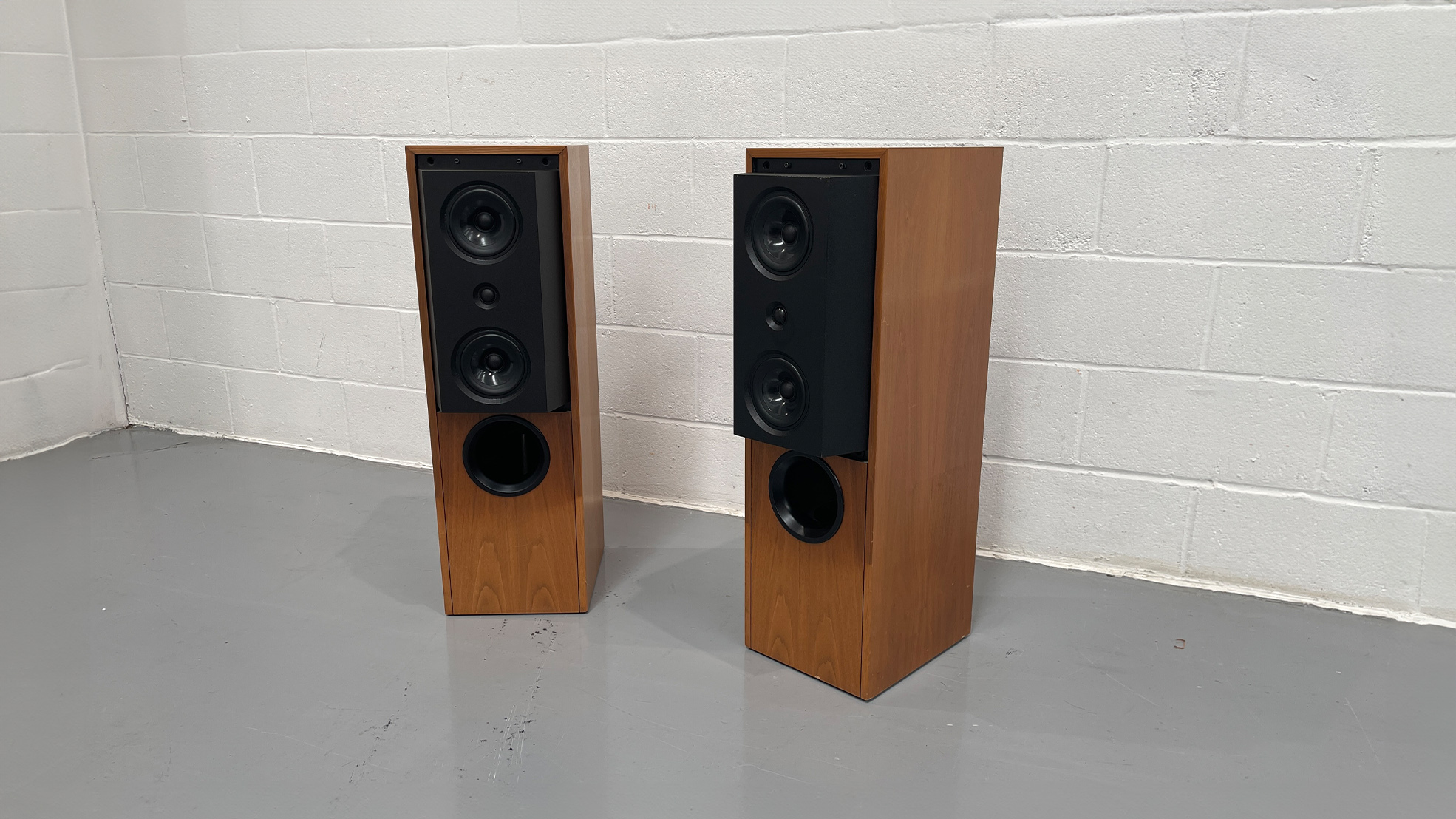
As we sit in our test room looking at KEF’s legendary Reference 104/2, it is hard to believe that these floorstanders were introduced as far back as 1984. Forty years is a long time but these speakers wear it well, so sleek and clean is their appearance. It is easy to understand how they could be credited with pushing the industry’s move to slimmer, more elegant floorstanding designs through the following decade.
The Reference 104/2 speakers stayed in production from 1984 to 1996. Over that long life, they continued to be developed with bi-wiring capability and various tweaks to the drive units and cosmetics added over time. Our samples are from KEF’s vaults and are an early singled-wired version. The 104/2 proved a huge sales success for the brand, particularly so in the all-important USA market where they almost single-handedly established KEF as a real force.
On introduction, the 104/2 speakers were sold at the princely but entirely reasonable sum of £599. That would certainly have been considered premium but not what we now consider ‘high-end’. Using the Bank of England’s online inflation calculator that price comes out to just short of £1900 in today’s money. Of course, there are huge differences in the relative cost of materials and labour to account for, but we can’t think of a current sub-£2000 speaker that can match the 104/2 in terms of engineering content.
Design & engineering
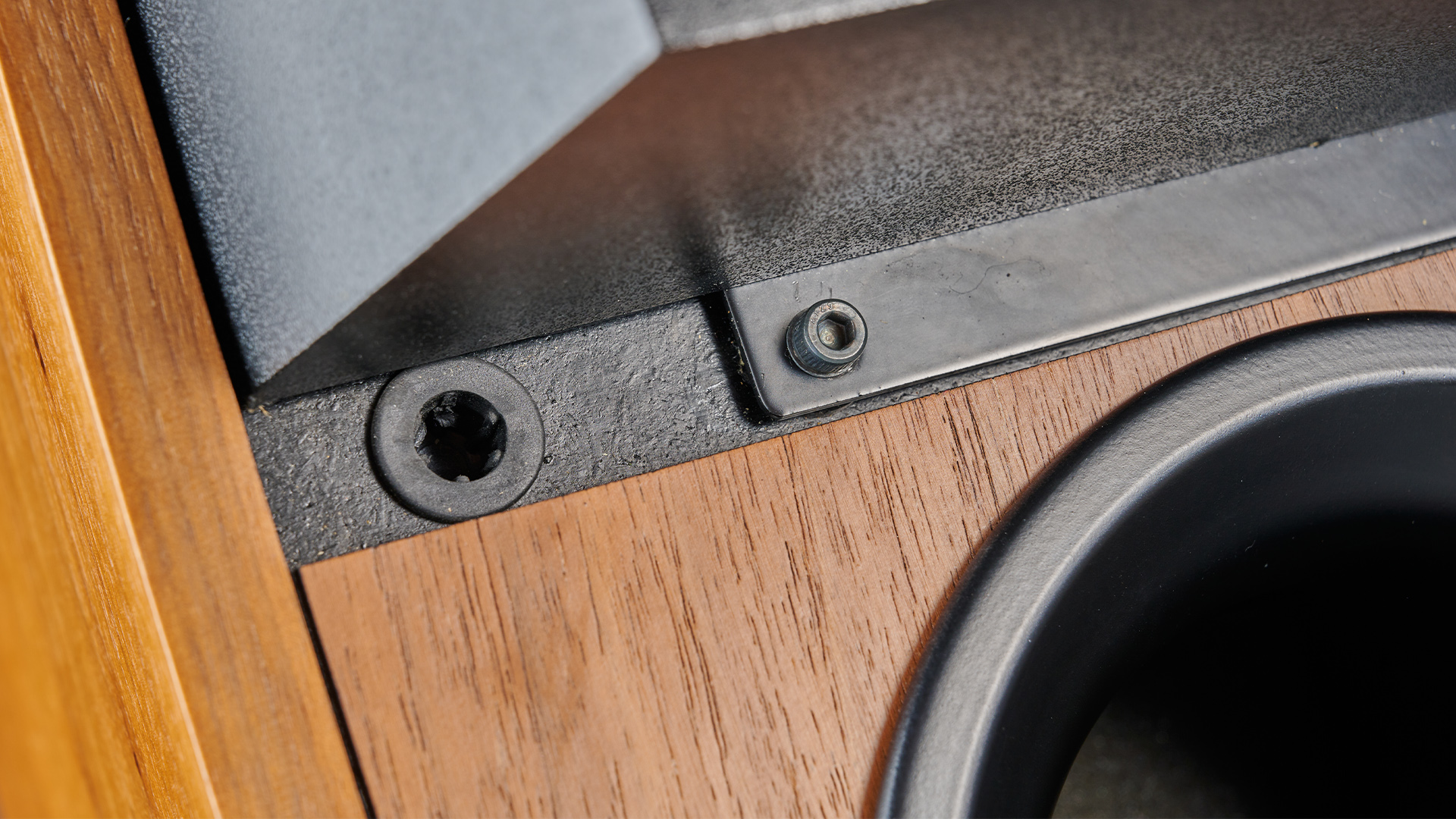
KEF’s aim for the 104/2 was ambitious. It wanted a speaker that combined high sensitivity, loudness capability, good bass extension and low colouration without being too big; a tricky ask, particularly back then. Given the task (and we assume a decent budget), the company’s much-respected engineering department didn’t hold back, coming up with clever design solutions that still seem innovative.
They produced a floorstanding speaker with a sensitivity of 92dB/W/m and capable of 112dB loudness peaks. Power handling was impressive too, rated at 200 watts, while the frequency response was claimed to be 55Hz - 20kHz but measured within tight +/- 2dB limits. Such figures are competitive today, let alone back in 1984. Size? The final production model came in at a relatively compact 90 x 28 x 41.5 cm (hwd) but weighed a considerable 32kg.
Part of that heft can be explained by the use of five drive units in this three-way design. Only three of these units, a pair of 13cm B110 midrange drivers and a T33 soft dome tweeter are visible. These handle the frequency range down to around 150Hz where the two internal 20cm B200 bass units take over.

These bass drivers work in what is called a ‘coupled cavity’ arrangement where their output drives the large front panel port. The benefits of such an arrangement include improved efficiency over a sealed enclosure alternative, good transient behaviour and better resistance to subsonic signals (as from a turntable) than traditional reflex designs. A large metal rod connects the two bass drivers to cancel the bulk of the vibration they generate.
Those Bextrine-coned midrange units are unusual too. They don’t have a conventional driver chassis (so avoiding resonances) and are mounted into a dedicated resin-filled module along with the tweeter. This whole assembly – the complete black section on the top half of the 104/2 – is decoupled from the main cabinet in a bid to reduce any unwanted mechanical interactions. Putting the tweeter between the two midrange units also delivers a more even sound dispersion.
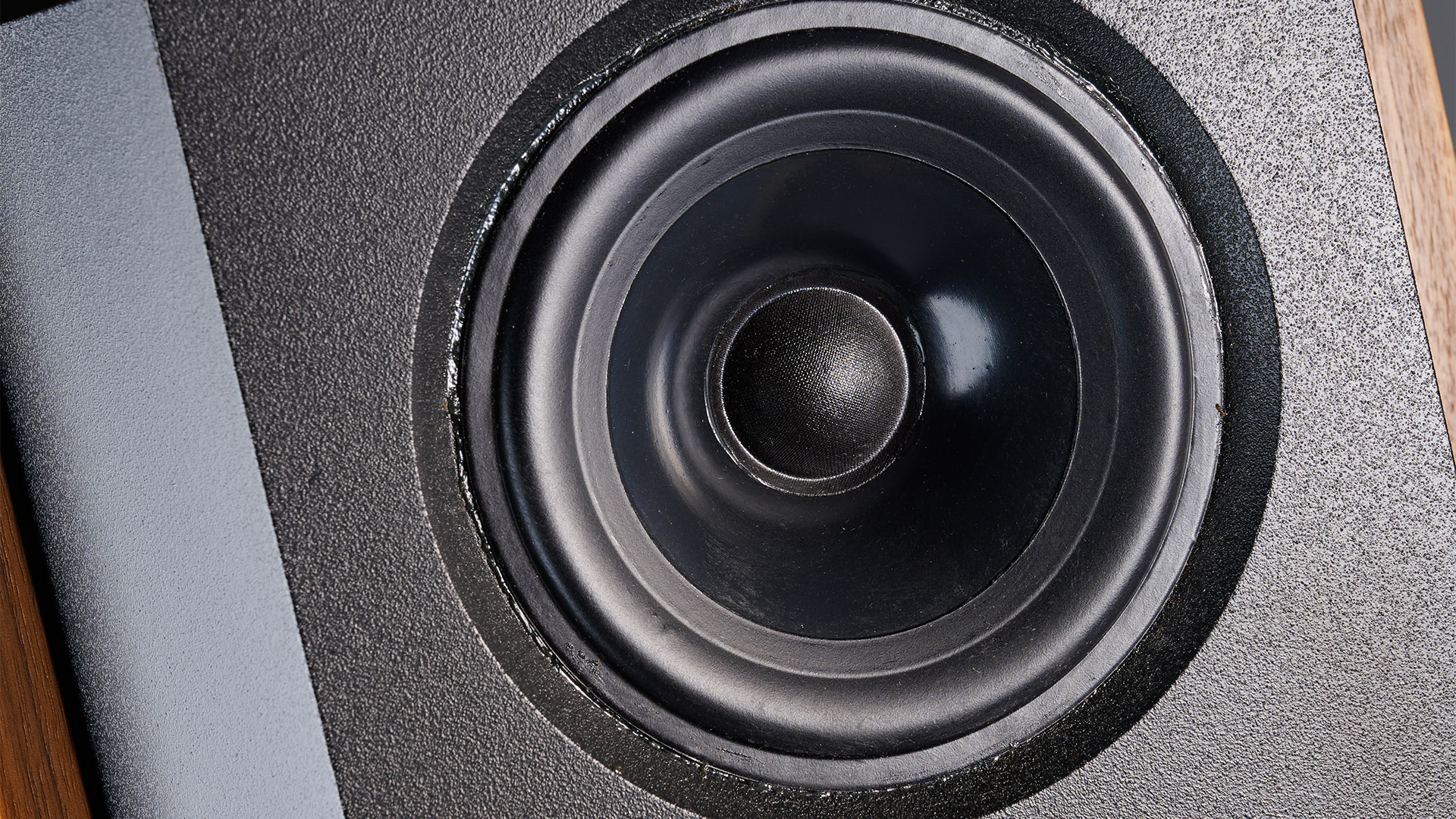
Remember that high 92dB/W/m sensitivity figure? Rather than going the obvious route to high sensitivity – lighter cones or horn-loading – KEF’s engineers decided to make the 104/2 a 4-ohm load. This approach offers gains in terms of acoustic output, though at the expense of demanding extra current from the partnering amplifier.
While most speakers tend to be a nominal 8-ohm load, their impedance varies significantly depending on the frequencies they are trying to deliver, so much so that the impedance can dip much lower, to around 4 ohms on occasion. KEF reasoned that most good price-compatible amplifiers could cope perfectly well with a 4-ohm speaker as long as its impedance didn’t dip much further and so designed a crossover that compensated for the innate impedance swings of the driver complement. This was called Conjugate Load Matching and resulted in a complicated, component-packed (around 40) filter network that ultimately gave the 104/2 a flat impedance curve; one that most amplifiers should have no trouble driving.
Build quality & compatibility
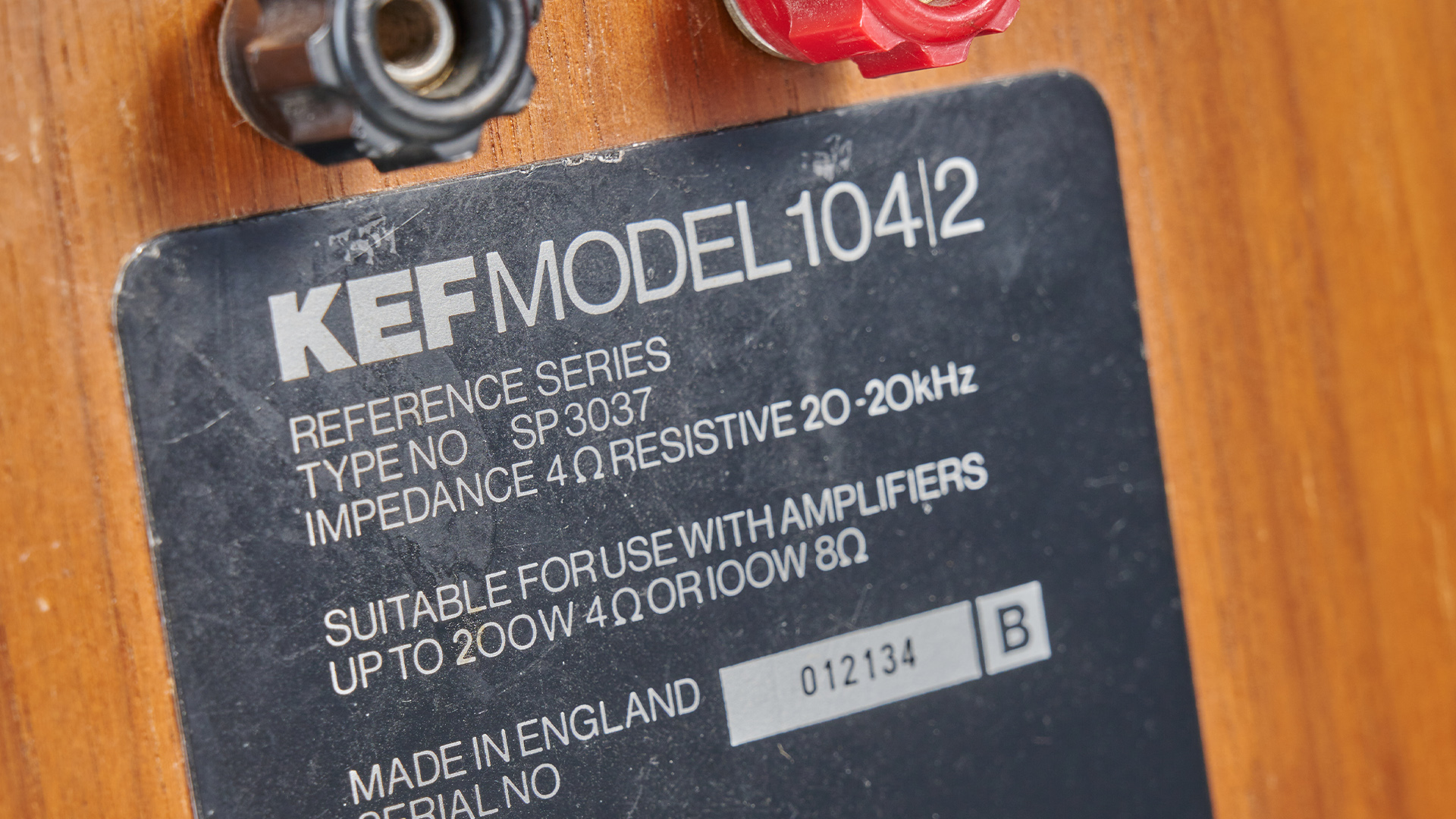
Moving away from the engineering, it is hard not to be impressed by the build and finish of these speakers. Our KEF-supplied samples are in good condition. There is the odd cosmetic mark, but mechanically and electrically they seem spot-on. The cabinet is beautifully made and still feels immensely solid. The wood veneer on our sample is classy, and as a whole they appear more professionally put together than most similarly-aged speakers we come across.
That high claimed sensitivity figure rings true. The 104/2 have no trouble filling our 3 x 7 x 5m (hwd) test room, even when driven with modestly powered amplification such as the Arcam A5 (50 watts per channel). But, if you really want to hear what they can do it pays to feed them with high-quality sources and amplification. Move up to the likes of the Naim Supernait 3 integrated and the leap in performance is clear, even more so when we plug the KEF speakers into our reference set-up of Naim ND555/555 PS DR music streamer and Burmester 088/911 Mk III pre/power amplifier.
Sound
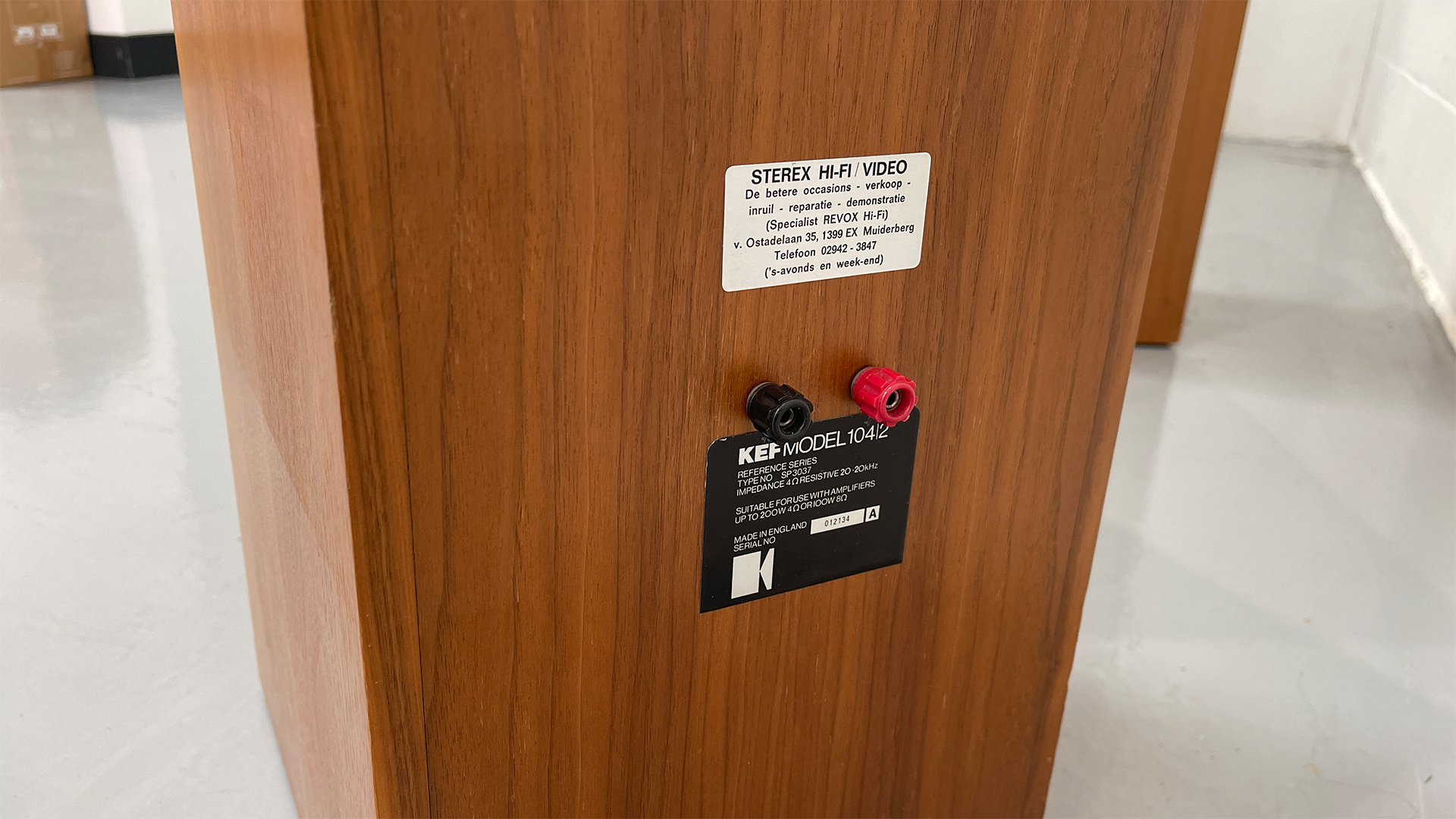
They may be decades old, but these KEF speakers still have enough in the way of transparency to make such an endeavour worthwhile. We have heard a fair few similarly-aged alternatives over the years and can’t think of another one that matches this floorstander’s articulation or clarity.
Those expecting an old-fashioned soft and warm balance are in for a shock. These are fast and responsive performers that still deliver enough in the way of resolution to satisfy by current circa £2k standards. If anything, they fall slightly on the leaner side, with that complex bass arrangement holding up its end of the bargain with unexpected agility and solid punch. Judged by modern standards, the 104/2 don’t quite have the low-end muscularity we would expect from their size. But, bass quality remains more than acceptable, even though there is a hint of excess blurring at the edges compared to the speaker’s immaculately crisp midrange frequencies.
Still, it is something we have no problem living with, and as we listen to Kendrick Lamar’s good kid, m.A.A.d city we find our attention drawn by the 104/2’s many strengths. Their midrange is astonishingly articulate and expressive, making it easy to track Lamar’s sometimes dense delivery. These speakers sound crisp in this region, with the leading edges of notes and sound defined with precision. That dome tweeter is good too, though perhaps lacking the final degree of refinement and textural detail to truly convince. Still, it integrates seamlessly with the midrange and doesn’t tend to draw too much attention to itself, which is a good thing.

Type Three-way, floorstanding
Enclosure type Coupled cavity
Nominal impedance 4 ohms
Frequency response (standard) 55-20,000Hz +/-2dB at 2m on axis
Sensitivity 92dB at 2m on reference axis for a pink noise input of 2.83V
Dimensions 900 x 280 x 415mm
Weight 32kg
Rhythmic drive is decent and the 104/2 generally sound right at home with music such as this, which is something we were not expecting. The way they deal with classical music is less surprising, but no less impressive. As we play Mahler’s Symphony No.3, it is hard not to be pleased by the dynamic reach and scale of their presentation. These speakers sound big and authoritative, rendering the music with an enviable degree of composure. They are controlled without ever sounding sterile. Details levels are high, but the fluid nature of the delivery stops things from sounding overly analytical. Despite all the attention paid to technology and engineering, the 104/2 don’t forget that music comes first.

Our time with these KEFs takes in all genres of music from Billie Eilish’s latest set to Motown legend Marvin Gaye and Jazz classics such as Time Out by the Dave Brubeck Quartet, and these speakers never disappoint. Could they be more tonally even and neutral? By modern standards, they certainly could, as instrumental timbres and voices lack a little purity and natural warmth. It is also possible to accuse the bass of sounding just that bit detached from the rest of the frequency range – not by much, but enough to slightly distract on certain recordings.

Yet, we find all these things easy to forgive. Remember the age of the design and the sheer complexity of what KEF’s engineers achieved all those years ago and such shortcomings seem trivial.
The takeaway here should be that the KEF Reference 104/2 is a landmark product in speaker design, a hugely ambitious effort that even decades on remains a pleasure to use. If you ever come across a pair in good condition, don’t hesitate to snap them up. You won’t be disappointed.
MORE:
That Was Then... Wilson Benesch A.C.T. One
Best floorstanding speakers tested tested by our experts
Best KEF speakers: budget, premium, bookshelf and wireless systems







